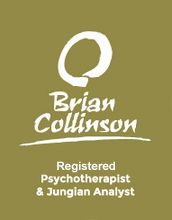Keeping Up Appearances: What DO We Do with Our Persona?

“Keeping up appearances” is a necessary part of life; we all do it. As a social species, humans have to manage the way that they appear to each other.

Jungians have a name for that aspect of ourselves that each individual shows to the outer world. We call it the persona. It includes many things, from the way we dress to our speech, mannerisms and attitudes.
Jung pointed out long ago that we need the persona, (the Latin word for “mask”). It’s a way of keeping ourselves safe, feeling secure and getting along with others in a social world. It’s fairly closely related to the social psychology concept of “social self”. As neuroscience researcher Sapien Labs puts it:
Social self refers to how we perceive ourselves in relation to others. It involves relationship building, empathizing, and communicating.
The persona is always helping us to swim in the ocean of social interaction. And that’s a good thing, right?
Persona is a Good Thing, but…
The persona is always trying to mediate between our inner private world and the outer social world. It tends to do this by comparing us with others. Often it’s concerned to ensure our membership in social groups that have what it interprets to be “high status” or “the right characteristics”.
As social psychology research establishes again and again, the social self tends to divide the world into “inners” and “outers”. For better or worse, we tend to compare ourselves to others, in terms of the groups to which we belong. We have an unconscious tendency to see the groups that we belong to as somehow “better” than the other groups. And we tend to see ourselves as “of the better sort” because we belong to this or that group. To chose a fairly mundane example, say someone is a Montreal Canadiens fan. He or she will tend to view “Hab fans” as just more savvy when it comes to hockey, and her- or himself as sharing in that coolness (sorry, Leaf Fans!).
But what happens when the less acceptable parts of ourselves emerge? Enter the Shadow…
Unfavourable Comparisons
As discussed in previous posts, Jung very succinctly defined the shadow as being “that which we do not wish to be”. We tend to become aware of our shadow as the parts of ourselves represented by “repressed desires and uncivilized impulses, morally inferior motives… all those things about oneself one is not proud of”, in the words of Jungian Daryl Sharp. When we do become aware of these things, we often run into persona problems.
It may be that we’ve seen ourselves and presented ourselves to the world in a certain way. Moreover, the way that we present ourselves may indicate strongly the kind of person we see ourselves as being, the kind of groups we belong to, and the kinds of people who are “like us”. So, what happens when we see ourselves in a different light?
Consider the individual who is entirely identified with the work that they do. Let’s say that this person is so consumed with work that he or she might be described as a “workaholic”. Yet, that individual may be in a workplace and / or a profession where working extremely long hours is the norm—or is even a badge of honour. That person may be completely identified with their role of working long, grueling hours. Even if the hours and pace of the work are destructive of the individual’s health, the group may identify this work pattern as being “tough” and a “team player”.
So, what if, for whatever reason, an awareness begins to surface in the individual that they actually don’t want to work this hard? Or that this brutal work pace is actually wrecking their health? Or that they would rather be doing something else? This new awareness is likely to be dismissed by the individual. “I don’t really feel that way; I’m just being a wimp.” she or he may say. He or she may even feel ashamed, or like a failure, relative to peers and colleagues. There may be a great deal of anxiety. It may be easy to turn away.
Yet, what if that impulse comes from who the person really is? What if it’s the voice of the authentic self?
When Who We Really Are Shows Up
Such an awareness may be contrary to the voice of the peer group. It may even be contrary to the persona, to the story we have told ourselves and others about who we really are. Yet, often enough, it may be the voice of our real identity breaking into our lives. And it may be that “keeping up appearances”, the way we present ourselves to the outer world, will have to change.
The journey to our real identity often includes getting beyond over-identification with a certain specific persona. Equally as much, it often involves finding a new persona, or way to be in the social world. This process of finding a new persona that fits with the parts of ourselves that are emerging is often part of major life transitions.
It can be of tremendous value to work with an insightful and supportive /a-midlife-transition, as we work through this process of adjusting our persona to fit our emerging self.
I wish you every good thing on your personal journey,
© 2022 Brian Collinson, 2238 Constance Drive Oakville, Ontario (near Mississauga)
